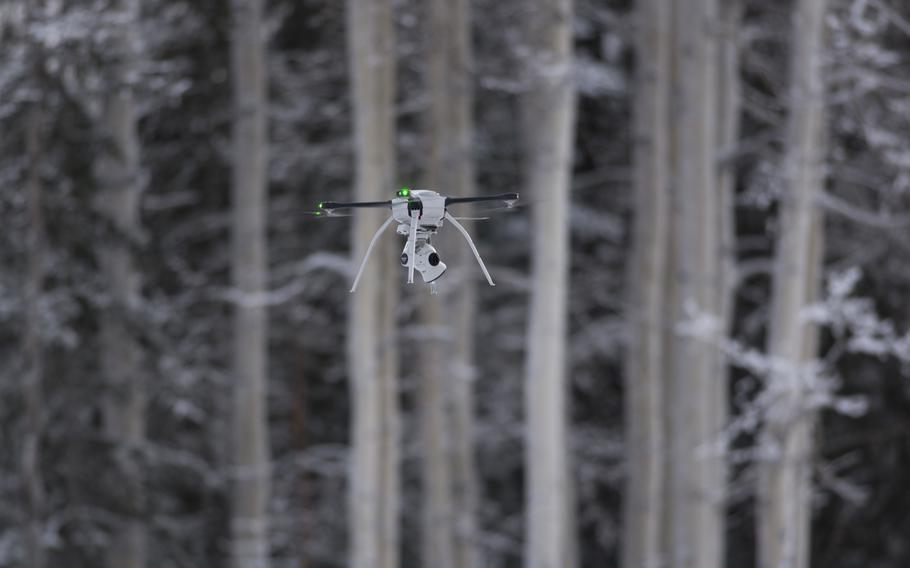Community News
PACAF cultivates CE Airmen with ground-breaking RADAS training
Naval Postgraduate School Public Affairs February 1, 2019

U.S. Air Force civil engineers fly a Small Unmanned Aircraft System during a newly adopted Rapid Airfield Damage Assessment System training course at Joint Base Elmendorf-Richardson, Ala., Jan. 23, 2019. Throughout the first week of training, Airmen focused on learning to fly the SUAS. During the second week, they learned to fly the RADAS mission while using the SUAS systems. (Photo by Airman 1st Class Crystal A. Jenkins) ()
JOINT BASE ELMENDORF-RICHARDSON, Alaska (AFNS) -- For more than nine days, 12 civil engineer Airmen from several Pacific Air Force bases recently participated in a secondary operator training course as a part of the newly adopted Rapid Airfield Damage Assessment System here.
RADAS, one of the Air Force Civil Engineer Center’s latest research and development projects, is designed to significantly reduce hazardous exposure Airmen might encounter, as well as reduce the time the airfield recovery and assessment process takes.
“In the Air Force, our war-fighting platform is the airfield. Our job is to be able to recover one quickly with great efficiency, so we are leveraging the newest technology to be able to do that,” said U.S. Air Force Maj. Nicholas Nabors, AFCEC Chief of Expeditionary Engineering and Modernization. “As part of the RADAS fielding effort, we are training Airmen to become skilled sensor operators as opposed to just drone pilots. In a very short amount of time we are able to take our civil engineers, who are already trained to rapidly assess airfield damage, and give them an incredibly useful tool with advanced capabilities.”
This new innovative technology, currently adopted by the Pacific Command and fielded through PACAF, cultivates the region’s long-term capabilities of competing, deterring, and winning by saving lives and cutting flightline recovery times in a real-world scenario.
Throughout the first week of training, the Airmen focus on learning to fly the Aeryon SkyRanger Small Unmanned Aircraft System. During the second week, they learn to fly the RADAS mission while using the SUAS systems.
“Coming from a civil engineer background, we are used to challenges; learning how to use the SUAS was no different,” said Air Force Staff Sgt. Jason Holmes, 51st CES engineer apprentice stationed at Osan Air Base, South Korea. “We did everything from preflight inspections to written and practical qualification tests. I think the advancements we are making in airfield assessment keep us fresh and ready for the fight tonight and tomorrow.”
In operational use, the SUAS is capable of quickly deploying and locating airfield damage as well as unexploded ordnance, left after a base attack. The real-time view gives both engineers and base leadership the ability to have a stitched-together mosaic of flightline images instantly, in addition to the rewind and zoom in or out controls while viewing the airfield during an assessment.
“Under the legacy style of airfield assessment, a team of four or more Airmen physically go and assess,” said Nabors. “RADAS not only reduces the number of our Airmen (exposed to hazards) down to just one or two, but gives leadership a near immediate ability to prioritize mission capabilities sooner through its networking capabilities. Through these types of advancements we remain ready for the future.”
Throughout the training course, operators overcame the cold temperatures faced and it was proven the SUAS operates well in harsh environments and demanding weather conditions, said Nabors.
The CE Airmen will continue to train with the current SUAS operationally with hopes of making them mainstream across the Air Force in the near future.